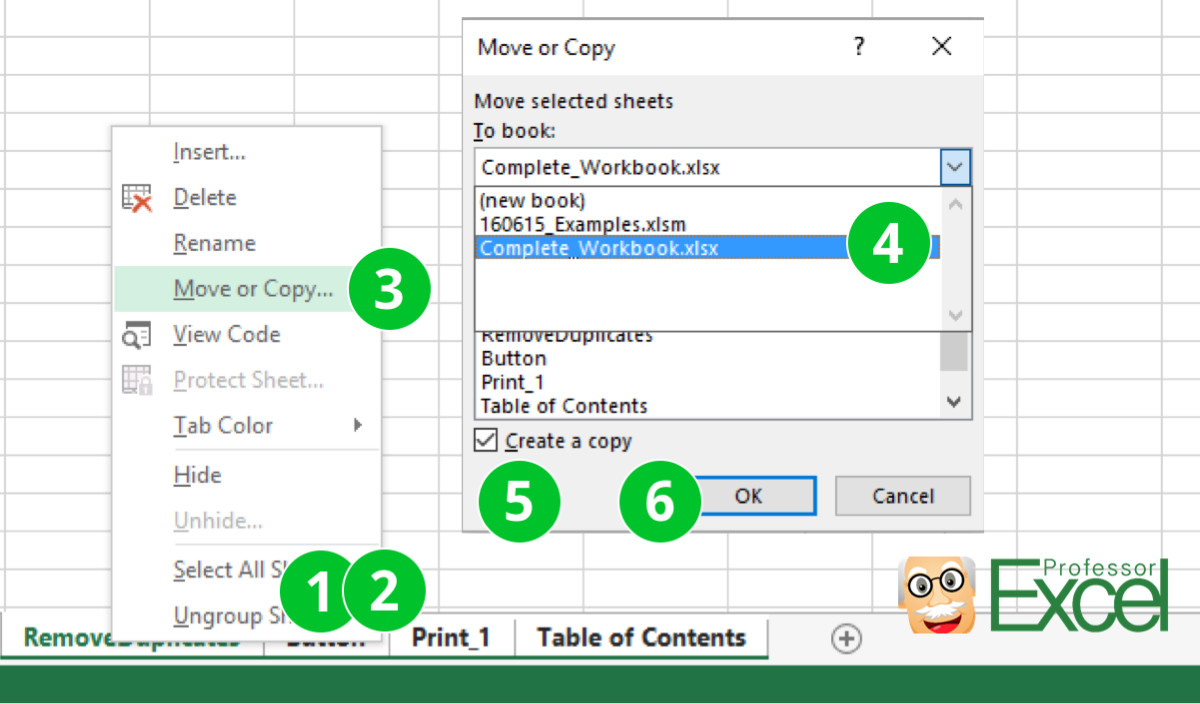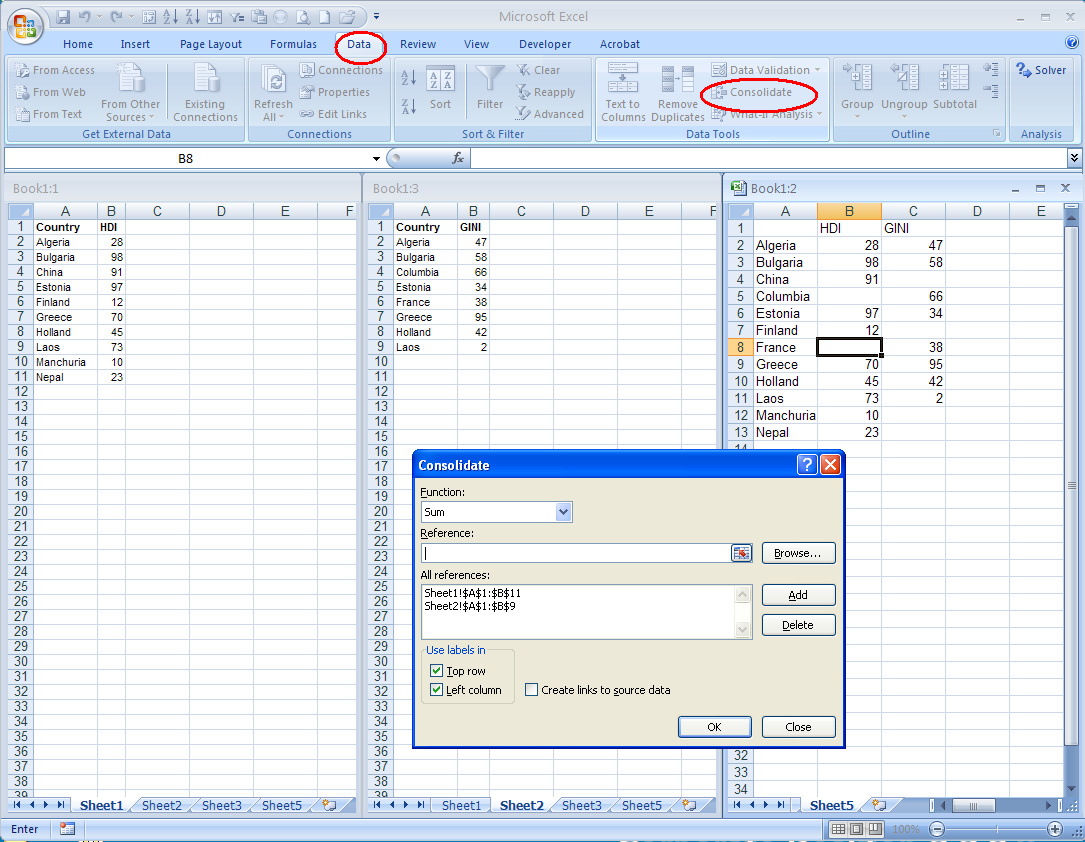Merge Multiple Excel Sheets Easily: Ultimate Guide

Merging multiple Excel sheets into one cohesive document can be a daunting task for many, especially when working with large datasets or complex spreadsheets. Whether you're consolidating financial reports, combining survey results, or integrating data from different departments, Excel offers several methods to streamline this process. This guide will walk you through various techniques to merge Excel sheets, ensuring your data is accurately compiled and presented in an organized manner.
Understanding the Need for Merging Excel Sheets

Before diving into the how-to, let's consider why merging Excel sheets might be necessary:
- Centralization of Data: Merging multiple sheets can help centralize data from different sources or periods, making it easier to analyze and report.
- Improved Data Analysis: When you combine sheets, you enhance your capability to perform cross-sectional analysis or trend analysis over time.
- Streamlined Reporting: Monthly, quarterly, or annual reports often require data from various sheets to be consolidated into a single report.
- Data Consistency: Ensuring that data from different sources follows the same format and structure, reducing discrepancies.
Methods to Merge Excel Sheets

1. Manual Copy-Paste Technique

The simplest but most time-consuming method:
- Open the workbook containing the sheets you want to merge.
- Select the tab of the sheet you wish to merge into the main sheet.
- Right-click, choose 'Move or Copy...'.
- In the dialog box, select your destination workbook, check 'Create a copy', and hit OK.
- Repeat for all sheets you want to merge, then consolidate manually or with Excel's built-in tools like 'Consolidate' or 'Pivot Table'.
🚨 Note: This method is prone to human error, especially when dealing with large volumes of data or many sheets.
2. Using Excel’s Consolidate Feature

Excel's consolidate tool can help merge data from multiple sheets into one summary sheet:
- Create a new workbook or use an existing one as your destination.
- Go to the 'Data' tab, select 'Consolidate'.
- Choose the function you want to apply (Sum, Count, Average, etc.).
- Use the 'Reference' box to select ranges from different sheets:
- Click on the button with a red arrow to navigate to your source sheets.
- Select the range of data you wish to merge.
- Add the ranges, clicking 'Add' after each selection.
- Check 'Create links to source data' for dynamic updates.
- Hit 'OK' to consolidate.
📚 Note: Consolidate function can handle simple data merging, but complex data might require additional steps or manual adjustments.
3. VBA Script for Advanced Merging

For more control over the merging process, Visual Basic for Applications (VBA) can automate complex tasks:
Sub MergeSheets()
Dim ws As Worksheet
Dim MasterWS As Worksheet
Dim lr As Long
Dim i As Integer
'Define Master worksheet
Set MasterWS = ThisWorkbook.Sheets("Master")
i = 1
'Loop through all sheets
For Each ws In ThisWorkbook.Sheets
If ws.Name <> "Master" Then
' Find the last row in Master sheet
lr = MasterWS.Cells(Rows.Count, i).End(xlUp).Row + 1
' Copy data from the current sheet to the Master sheet
With ws
.Range("A1:G" & .UsedRange.Rows.Count).Copy
End With
MasterWS.Cells(lr, i).PasteSpecial xlPasteValues
Application.CutCopyMode = False
i = i + 7 ' Move to the next set of columns
End If
Next ws
MsgBox "Merge Complete!"
End Sub
💾 Note: This VBA code assumes a 'Master' worksheet exists where data will be merged. Adjust the column jump ("i = i + 7") for your specific data layout.
4. Power Query

Power Query in Excel allows for a dynamic merge of data from multiple sheets or workbooks:
- Go to the 'Data' tab, select 'Get Data' > 'From File' > 'From Workbook'.
- Select the workbook with multiple sheets.
- In the Power Query Editor:
- Select 'Transform Data' to merge sheets.
- Use 'Append Queries' to combine tables from different sheets.
- Ensure your data columns match or transform the data as needed.
- Load the merged data back into Excel.
| Method | Use Case | Complexity |
|---|---|---|
| Manual Copy-Paste | Simple datasets, small number of sheets | Low |
| Consolidate | Consistent data from multiple sheets | Medium |
| VBA | Complex merging, large datasets | High |
| Power Query | Dynamic data merging, multiple workbooks | Medium-High |

Handling Potential Issues

When merging Excel sheets, common issues might arise:
- Data Integrity: Ensure data types, formats, and headers match across sheets before merging.
- Duplicates: If merging similar datasets, be aware of potential duplicates and decide how to handle them.
- Formula References: Be cautious with sheets containing formulas; they might not copy correctly or could reference data no longer in the merged document.
- Performance: Large datasets merged into one might slow Excel down; consider splitting into multiple sheets or using Power Query for efficiency.
Throughout this journey of merging Excel sheets, you've seen a range of techniques tailored to different scenarios. Each method, from manual to automated, offers unique advantages and considerations. Manual copy-paste might suffice for quick, small-scale merges, whereas Power Query excels for dynamic data merging. VBA scripting provides a customizable solution for more complex tasks. The choice depends on your comfort with Excel, the complexity of the data, and the level of automation required. In your future endeavors with Excel, remember to: - Assess the scale and complexity of your merge task before choosing a method. - Maintain data consistency across sheets to avoid merging complications. - Regularly save your work to prevent data loss during the merge process. As you tackle these tasks, your proficiency with Excel will grow, enabling you to handle even more intricate data scenarios with confidence.
What if my Excel sheets have different headers?

+
If the headers differ, you should align them manually or use Power Query to transform and match headers before merging.
Can I merge Excel sheets with different formats?

+
Yes, but ensure data consistency before merging. You might need to standardize formats or handle different formats as part of your merge process.
How do I handle duplicate entries when merging sheets?

+
Use functions like ‘Remove Duplicates’ post-merge or employ Power Query to remove duplicates during the merge process.



